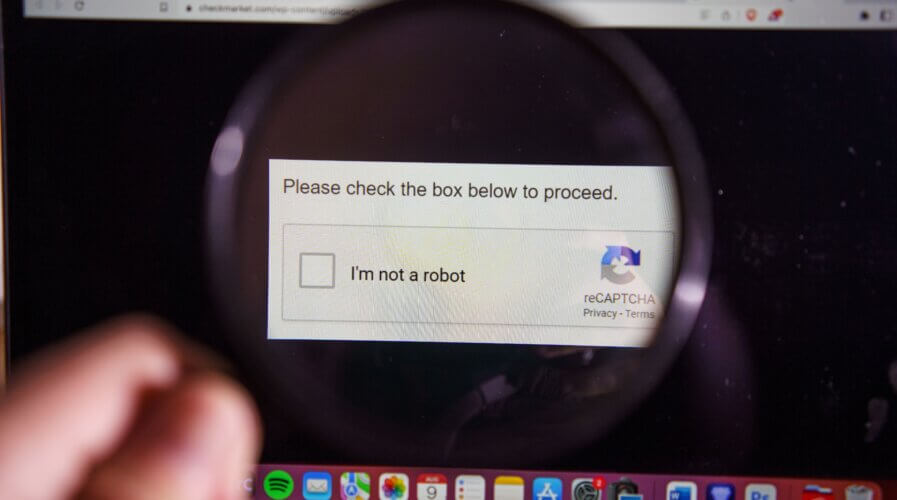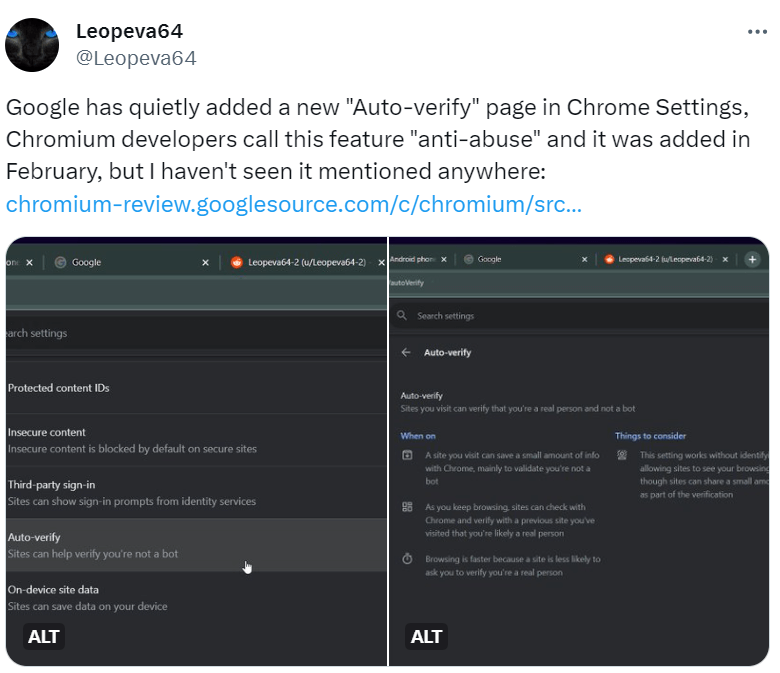
User pushback against CAPTCHAs: a sign for change (Source – Shutterstock).
Debating CAPTCHAs in 2024: stick with solving them or ditch the bot blockers?
- The necessity of solving CAPTCHAs clashes with user frustrations and evolving privacy and security concerns.
- CAPTCHAs in 2024 stir debate over their efficiency vs. user inconvenience, with emerging features for smoother browsing.
- CAPTCHAs face user pushback and advanced cybercriminal bypass methods, highlighting the need for innovative solutions.
Alright, let’s start a debate. Solving CAPTCHAs – yes or no?
It’s 2024; should we keep solving CAPTCHAs or should we leave them behind in the past? Sure, they serve a purpose on the internet – blocking bots from activities like account creation, comment spamming, and bulk purchasing. Yet, they’re also incredibly irritating. There are times I question if I’m a bot myself. Do android writers recognize their android nature?
Every time a CAPTCHA challenge appears, I find myself scrutinizing a grid of nine images, trying to identify traffic lights, crosswalks, or bicycles. It’s frustrating, especially when I miss one tiny, ambiguous section. And then there are those times when you’re left guessing if a fragment of a car should count or not. More recently, I’ve been tasked with rotating a 3-D rat to align with a puzzle direction, which sounds simple but is actually surprisingly tricky due to poor image quality and difficulty distinguishing the rat’s head from its tail.
Now, let’s address this. ReCAPTCHAs and other traditional CAPTCHAs have been effectively safeguarding online content and revenue for years. But the public opinion is clear: they’re widely disliked.
Accessibility and user experience issues to solving CAPTCHAs
CAPTCHAs aren’t just annoying and disruptive to the user journey; they also pose serious accessibility challenges. For individuals with dyslexia, visual impairments, or sensory disabilities, text- and image-based puzzles can be downright impossible to solve.

A challenge of CAPTCHAs. (Source – X).
The version of reCAPTCHA that simply asks users to confirm they’re not robots was somewhat better for user experience. However, those using screen readers still struggled with them. Often, detection failures led to a secondary verification step involving image recognition, which compounded the issue.
A lot of websites still operate with reCAPTCHA v2. Under this system, if a user’s behavior appears suspicious, they’re presented with a challenge to prove their humanity. This could be as simple as ticking a box stating, “I’m not a robot,” or it might involve a more complex image or audio recognition task. The extent of the challenge depends on Google’s confidence in the user’s humanity.
ReCAPTCHA v2’s effectiveness is based mainly on Google’s “advanced risk analysis system,” which relies heavily on Google cookies. Chrome users or those logged into Google accounts usually face a simple checkbox. Conversely, Firefox users with disabled third-party cookies often encounter challenging image recognition tasks.
Not everyone is a Chrome user or comfortable with Google services, often due to privacy concerns. As a result, privacy-minded individuals using browsers like Firefox or Brave, or even VPNs, face more stringent challenges from reCAPTCHA v2. This not only degrades their experience but also affects website conversion rates.
Cybercriminals outsmarting CAPTCHAs
What’s more, the widespread use of reCAPTCHA v2 has led cybercriminals to develop sophisticated methods to bypass even its most complex challenges. Some bots now use advanced AI, trained with neural networks, to solve reCAPTCHAs automatically.
Ironically, while Google uses reCAPTCHA to improve its AI models for image and audio recognition, cybercriminals are exploiting these AI advancements to defeat reCAPTCHA. It’s a digital life cycle!
Criminals also employ CAPTCHA farms in low-cost countries, where human workers solve reCAPTCHA challenges for bots. This approach enables bots that don’t require JavaScript execution. To bypass reCAPTCHA v2, these bots simply need to submit a response token from the CAPTCHA farm.
This method allows attackers to use simpler HTTP request libraries rather than complex automated browsers, reducing operational costs and enabling faster page crawling or more efficient credential stuffing.
In response to user grievances, Google introduced reCAPTCHA v3 to enhance the user experience. This version is invisible to site visitors and doesn’t require solving challenges. Instead, it continually assesses visitors’ behavior to determine their human or bot status.
Currently, reCAPTCHA v3 is active on over 1.2 million websites, compared to the 10 million-plus sites using v2. It assigns a score between 0 and 1 to each user request, gauging the likelihood of it coming from a bot or a human. Users logged into Google accounts or using Chrome generally score higher. Website admins can refine these scores by specifying user actions that align with typical behavior in various contexts.
Unlike reCAPTCHA v2, where user response verification was sufficient, v3 requires admins to decide based on user scores. This complexity poses a significant challenge, even for seasoned webmasters. Although reCAPTCHA v3 improves user experience by eliminating interruptions, it raises privacy issues and adds administrative complexity.
Future of CAPTCHAs: auto-verify features in browsers
Whether it’s v2 or v3, people seem to have a universal aversion to solving picture puzzles. Mashable SEA reported that in May, a user @Leopeva64 noticed Google Chrome testing an “auto-verify” feature on the desktop. This feature lets sites recognize users who have previously solved a CAPTCHA, letting them proceed without facing another puzzle.

Can we expect auto-verify to come anytime soon? (Source – X).
Recently, @Leopeva64 discovered that Microsoft Edge is testing a similar feature in its Android app, allowing websites to recognize users through previously solved CAPTCHAs, confirming their human status without requiring additional puzzle solutions.
The exact timeline for these auto-verify features to be integrated into the public releases of Chrome and Edge remains uncertain. However, what is evident is the growing momentum towards eliminating the constant need for CAPTCHA verifications. This shift reflects a growing preference for smoother, less intrusive user experiences on the web while maintaining security standards.
As the digital landscape evolves, integrating such features in mainstream browsers like Chrome and Edge signals a potential end to the era of repetitive CAPTCHA challenges. This change could mark a significant step forward in making web browsing more seamless and user-friendly, especially for those who have been burdened by the often cumbersome task of proving their humanity to machines.
READ MORE
- Safer Automation: How Sophic and Firmus Succeeded in Malaysia with MDEC’s Support
- Privilege granted, not gained: Intelligent authorization for enhanced infrastructure productivity
- Low-Code produces the Proof-of-Possibilities
- New Wearables Enable Staff to Work Faster and Safer
- Experts weigh in on Oracle’s departure from adland




